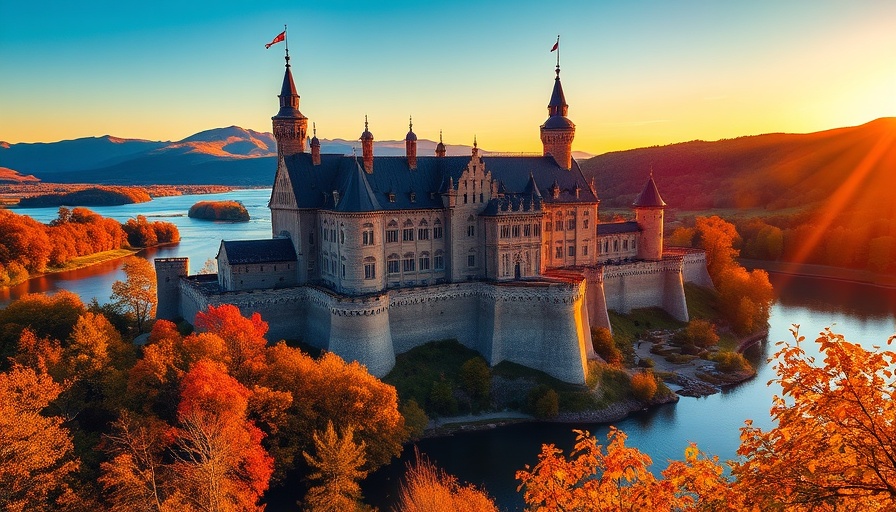
The Allure of Castles: A Timeless Fascination
Castles have been captivating the human imagination for centuries, standing as battlements of power, grandeur, and history. These structures, which were once the abodes of kings and queens, tell stories of conquest, culture, and architectural innovation. Even today, they remain prominent tourist destinations, drawing millions of visitors eager to explore their sprawling grounds and ornate interiors. But what makes these mighty fortresses so intriguing in our modern age?
Unearthing the Historical Context of Castles
Castles are not just mere relics of the past; they are symbolic monuments that have shaped history itself. From the towering castles of medieval Europe, which served as both military strongholds and luxurious homes, to the ancient fortifications of the Middle East, castles echo the power dynamics of their times. Originating in the 9th century when Norman invaders sought refuge and protection, they evolved from simple wooden structures into the magnificent stone fortresses we marvel at today.
Modern-Day Tourism: Castles as Cultural Landmarks
Today, some of the largest castles in the world, like Windsor Castle in England and Neuschwanstein Castle in Germany, continue to serve dual roles as heritage sites and active royal residences. With their rich histories, these castles are more than just buildings; they are narrative landscapes that embody the triumphs and tribulations of their epochs. Visitors can immerse themselves in guided tours, exploring the labyrinthine halls filled with art, history, and relics of a bygone age.
Top 5 Largest Castles Around the Globe
1. **Malbork Castle, Poland**: The largest castle in the world by surface area, Malbork is a testament to the prowess of the Teutonic Knights. A UNESCO World Heritage site, this brick fortress is not only grand in size but also steeped in history.
2. **Windsor Castle, England**: As the oldest and largest inhabited castle in the world, Windsor Castle showcases a blend of architectural styles developed over nearly a millennium. It remains an official residence of the Queen.
3. **Neuschwanstein Castle, Germany**: A fairy-tale castle that epitomizes romantic architecture, Neuschwanstein attracts millions of tourists each year. Surprisingly, it was never completed but continues to enchant visitors with its picturesque location and dramatic turrets.
4. **Château de Chambord, France**: An iconic example of Renaissance architecture, this castle boasts a stunning double helix staircase and extensive grounds that rival many urban parks.
5. **Prague Castle, Czech Republic**: This sprawling castle complex is recognized by the Guinness World Records as the largest ancient castle in the world. It includes a mix of architectural styles reflecting the various periods of its construction.
Post-Pandemic Travel Trends: Castles as Safe Havens
In the wake of the COVID-19 pandemic, travel trends have shifted significantly, with many opting for destinations that offer both safety and rich experiences. Castles, thanks to their expansive grounds and outdoor spaces, present a perfect getaway for those looking to unwind and explore historic settings while maintaining social distance. The allure of cultural travel has surged, with travelers increasingly interested in destinations that offer immersive experiences, such as castle tours paired with local culinary delights.
Embracing the Future: Sustainable Tourism and Heritage Preservation
As the world reopens, there is a growing desire for sustainable tourism practices. Castles are not immune to this trend, with many historical sites actively engaging in eco-friendly initiatives, promoting preservation efforts, and ensuring that their legacy endures for generations to come. This commitment to sustainability encourages visitors to appreciate not only the beauty of these magnificent structures but also the importance of protecting them.
Final Thoughts: Why Castles Should be on Your Travel List
Whether you are a history enthusiast, architecture aficionado, or simply an explorer at heart, castles offer a unique perspective on the past while providing memorable experiences for travelers. Adding these magnificent structures to your travel itinerary will not only enrich your understanding of history and culture but also afford you breathtaking views and unforgettable moments. To uncover more about these mesmerizing sites and to discover travel trends that cater to your interests, contact us at (954) 456-0419 for more information.
 Add Row
Add Row  Add
Add 




Write A Comment